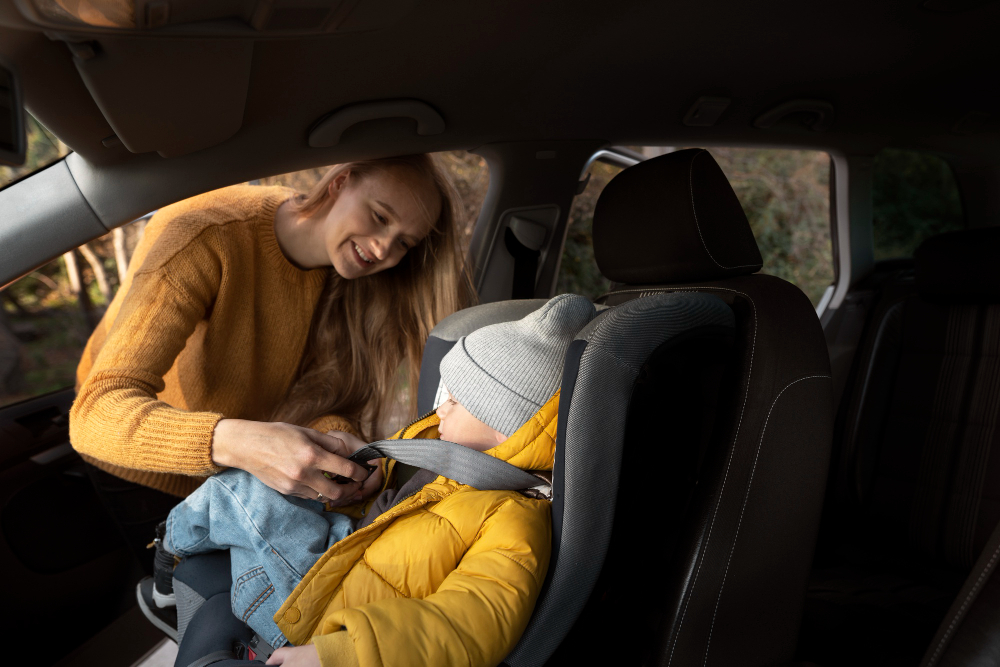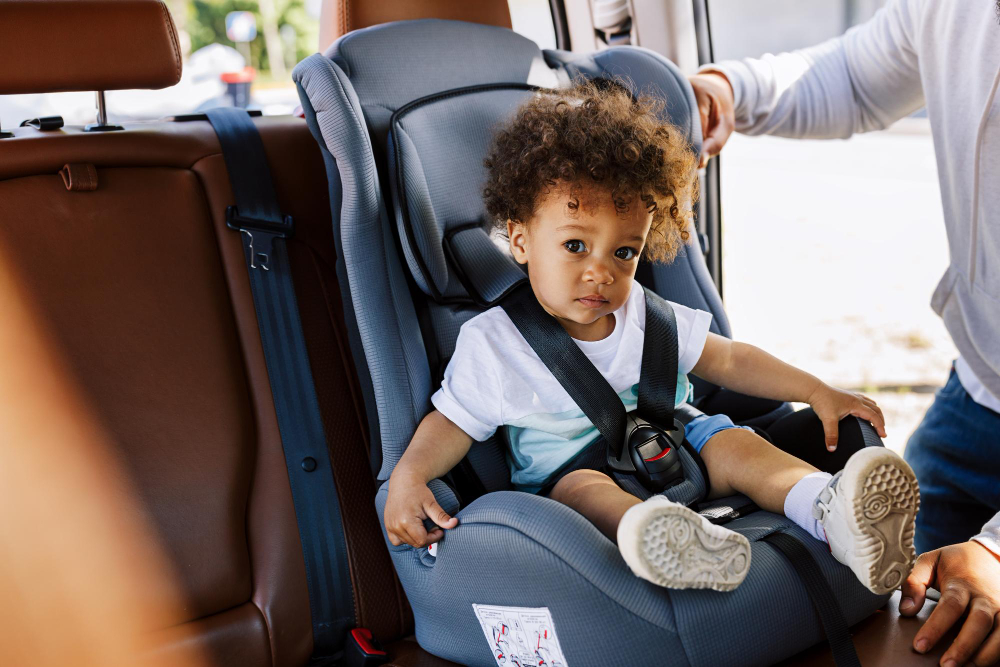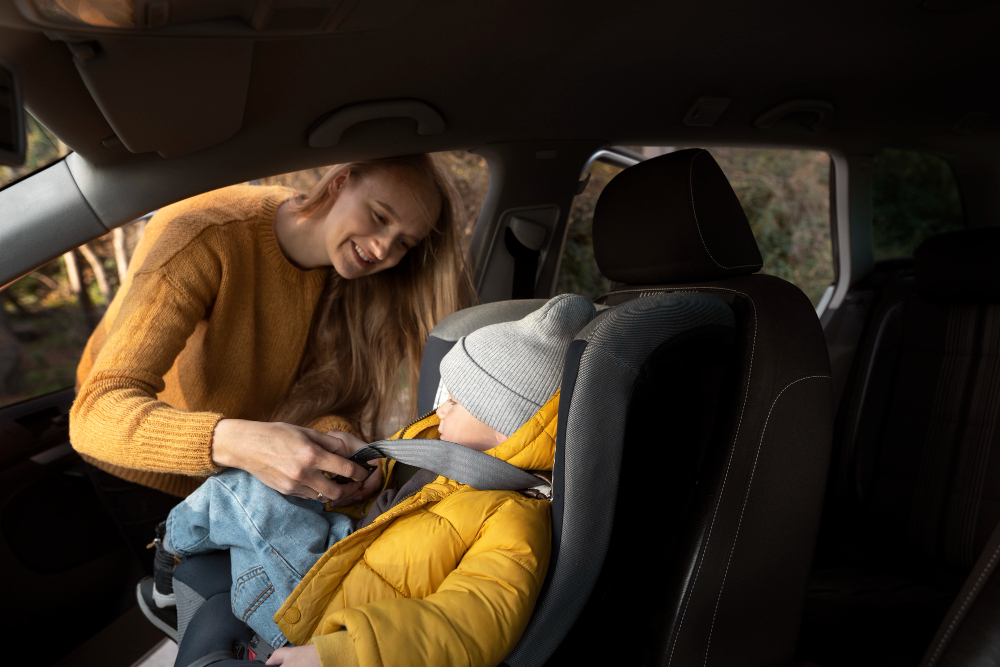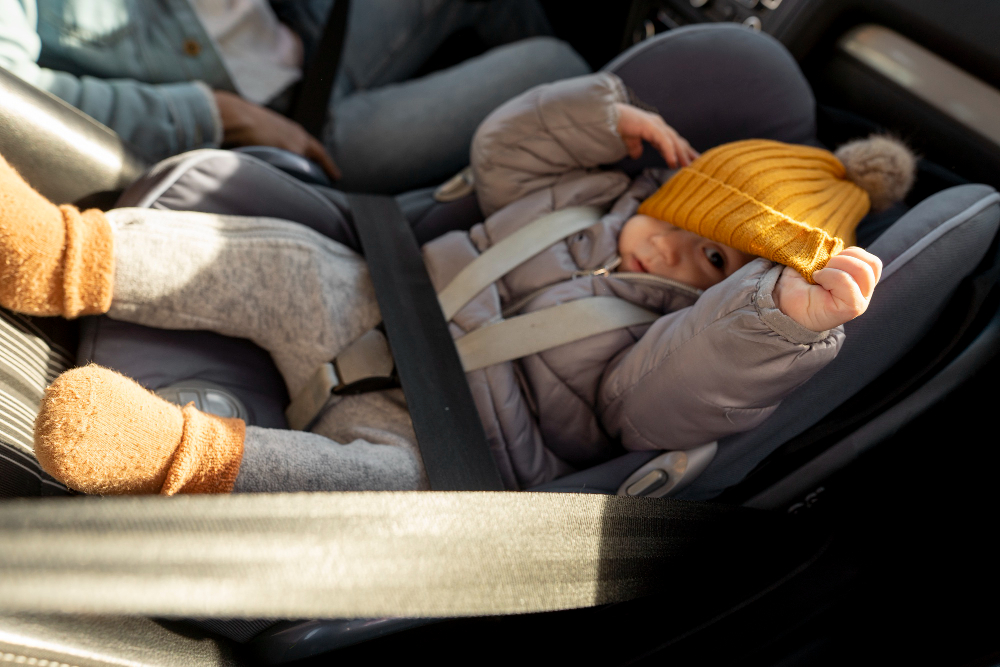10May
The Simple Truth About Keeping Your Child Safe in the Car
A Mother’s Unwavering Duty
As a mom, nothing is more important than ensuring your child’s safety and well-being every single day. This commitment takes on special significance when you’re travelling by car with your precious little one. The roads can be unpredictable, with hazards and risks that are outside your control. That’s why using a proper car seat is absolutely essential – it gives you vital protection against those unseen dangers.
Securing your child correctly in an appropriate car seat isn’t just smart, it’s the law in South Africa. But beyond simply following regulations, choosing and using the right seat is quite literally a matter of life-and-death importance for your little passenger.
With this guide, you can equip yourself with the knowledge to make an informed choice and properly use your child’s car seat, giving you priceless peace of mind on every trip.

Why Car Seats Are Non-Negotiable
Keeping Them Restrained and In Place
In a sudden stop or crash, the forces involved are powerful enough to violently throw an unrestrained child around the vehicle cabin. A secured car seat, however, acts as a protective shell, keeping your child tightly contained and preventing them from tragically striking surfaces or being ejected.
Distributing Crash Forces Away From Their Little Bodies
The most dangerous thing about a car accident for a child is the concentration of incredible impact forces on their small, fragile frames – especially delicate areas like the head and neck. Quality car seats are engineered to diffuse and distribute those forces across the strongest parts of their bodies, like the shoulders, hips, and back.
Meeting Stringent Safety Testing Standards
Any car seat sold today must meet rigorous standards for safety testing governed by strict regulations. They are subjected to simulations of potential real-world crash scenarios – head-on, rear-impact, side-impact, and more – to ensure they can provide effective shielding when it counts most.
Staying Securely Installed In Your Vehicle
Getting the car seat installation right is absolutely critical for its protective capabilities to be fully realized. Manufacturer latch systems and vehicle seatbelts tightly secure the seat, preventing it from moving dangerously in an accident. Adjustable safety harnesses ensure your child is comfortably but snugly strapped in with a cozy, customized fit.

Choosing the Right Seat for Your Child’s Stage
Finding Their Perfectly Matched Size
It’s vital to choose a seat designed specifically for your child’s current age, height, and weight – they aren’t one-size-fits-all. Using a seat matched to their size results in optimal positioning of safety components to safeguard their little bodies. As they grow, you’ll want to move up to the next seat variety to continue providing a secure fit.
Easy Installation to Simplify Protecting Them
When evaluating car seat models, look for user-friendly features like easy single-hand harness adjustments and clear installation instructions. These can help ensure you’re able to properly secure the seat in your vehicle and correctly position your child every trip without hassle or confusion.
Additional Safety Features for Extra Protection
For enhanced safety, consider models with extra protective elements like reinforced steel frames, energy-absorbing foam layers, and side-impact guards. These components are designed to better withstand forceful crash impacts from any angle and shield your child from intrusion.

The Rear-Facing vs. Front-Facing Decision
The Rear-Facing Advantage for Infants
For newborns through toddlers, rear-facing seats are strongly recommended for providing the best possible safety. The rear-facing position helps more evenly spread out collision forces across their bodies. It also protects their delicate head and neck far better than a front-facing orientation if a crash were to occur.
Transitioning to a Front-Facing Seat
As your child outgrows their rear-facing seat’s height and weight capacity, you’ll move them up to a front-facing model designed for bigger kids. The front-facing position still keeps them securely restrained but allows them to sit up tall and look around comfortably.

Knowing When to Move Up Seat Types
Following Age and Size Guidelines
Pay close attention to the minimum age, height, and weight requirements listed on each type of seat. These guidelines aren’t just arbitrary – they’re safety metrics set by safety experts to determine when a seat can properly fit and position a child’s body. Following them precisely is key to keeping your child fully protected.
Looking for Signs They’ve Outgrown Their Current Seat
In addition to the age and size guidelines, you’ll notice visible cues from your child signaling that it’s time for a seat change. If they’re becoming uncomfortable sitting for long periods, can’t have straps tightened enough, their head is taller than the top of the seat, or their weight approaches the maximum, it’s transition time.
Using a Seatbelt Safely When They’ve Outgrown Seats
Eventually, your child will outgrow the need for car seats or booster seats entirely. At this stage, it’s crucial to ensure your vehicle’s regular seatbelts fit snugly and that they understand the importance of wearing them properly every ride. Lead by example, and you’ll instill safe habits that stick for life.
Choosing and using the appropriate car seats as your child grows provides invaluable peace of mind as a parent. You’ll know you’ve taken every possible step to safeguard your most precious gift from the dangers of the road. So take the time to research your options thoroughly – it’s an investment that could save their life.
Ready to explore our selection of gently used, reliable car seats for your little one? Visit our website today to find the perfect fit and give your child all the protection they deserve.
Have questions about car seat safety or need assistance choosing the right option for your child? Join the conversation in our parent community forum and get advice from experts and other moms.
Did this guide help clarify the importance of keeping your child properly restrained on every car journey? Share your thoughts and experiences in the comments below.
